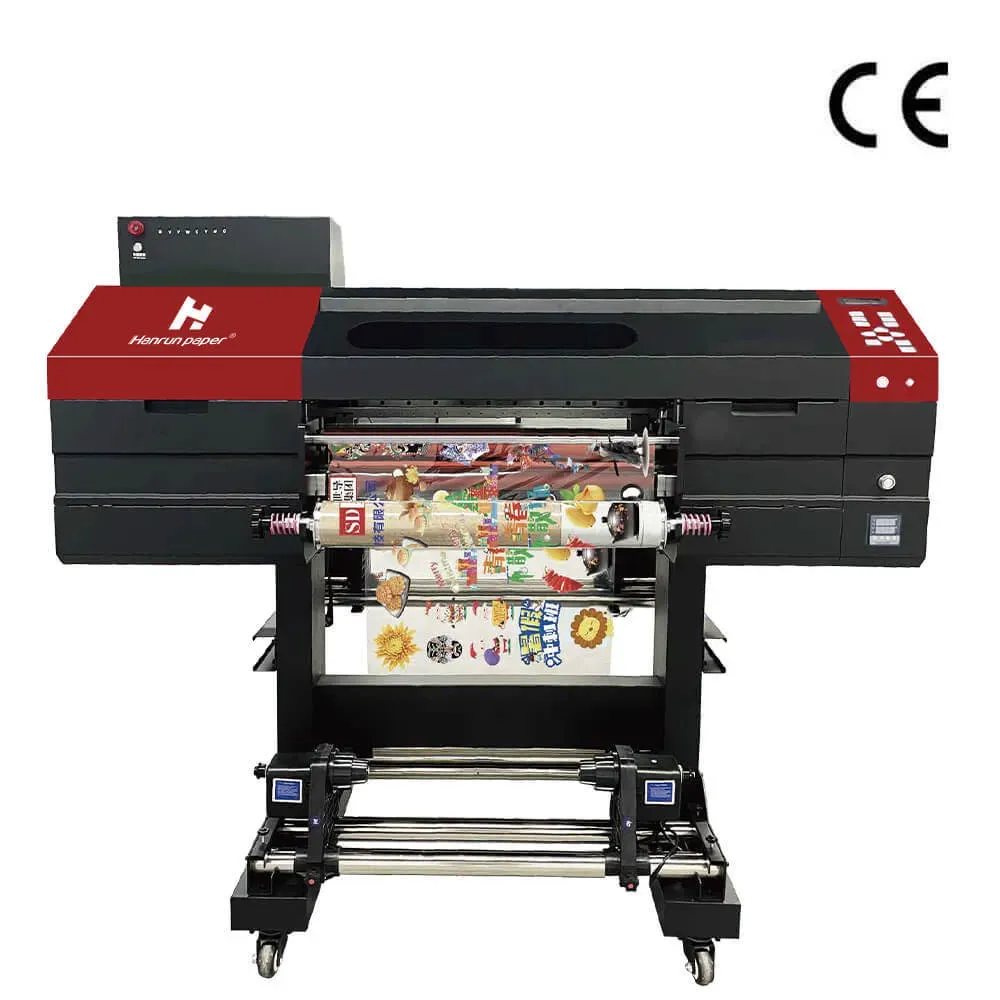UV DTF printing is revolutionizing the custom printing landscape, offering a unique method for transferring vibrant designs onto various substrates. This advanced printing technology combines UV printing techniques with Direct to Film (DTF) processes, ensuring exceptional quality and durability in every print. As a beginner exploring the world of UV DTF printing, understanding essential practices and equipment can significantly impact your projects’ outcomes. In this comprehensive DTF printing guide, you’ll find valuable insights and tips on selecting the best DTF printers, inks, and films for your creative endeavors. Whether you’re interested in custom apparel or promotional items, mastering UV DTF printing can open new avenues for innovation and artistry.
Also known as UV Direct to Film printing, this sophisticated approach utilizes ultraviolet ink applied onto a film before transferring the design onto the desired material. Emphasizing precision and vibrancy, this method is rapidly becoming a favorite among artists and businesses for its efficiency and high-quality results. For those curious about how to DTF print effectively, this guide will provide everything from choosing the best equipment to exploring UV printing tips that enhance your technique. Using the right DTF printers and proper surface preparation techniques can make all the difference in the final product’s appearance and durability. Thus, venturing into this printing medium could significantly elevate your product offerings and creative potential.
Understanding the Basics of UV DTF Printing
UV DTF printing, or Ultra-Violet Direct to Film printing, represents a significant advancement in the world of custom printing technology. Unlike traditional methods where designs are etched directly onto the substrate, UV DTF uses film as a medium, allowing for a more versatile application. This technique employs specialized UV inks that are cured with ultraviolet light, leading to exceptional print durability and color vibrancy. It’s an ideal solution for various materials, making it a popular choice among businesses and hobbyists alike.
With the ability to print on a wide range of substrates, including fabrics, plastics, and metals, UV DTF printing is prized for producing high-quality graphics that last. This technology not only enhances design flexibility but also broadens the horizons for creative projects. Whether you are designing custom clothing or promotional items, understanding the fundamentals of UV DTF printing is essential to navigating this exciting field.
Best Practices for Choosing UV DTF Printers
When it comes to selecting the best DTF printers for UV printing, quality and reliability should be your top priority. Brands like Epson and Mimaki have established themselves as leaders in the market, offering printers that deliver consistent results without compromising on quality. Investing in a high-quality printer ensures better ink adhesion, which is critical for achieving the desired final product. Furthermore, advanced features such as automated color profiling and user-friendly interfaces can significantly enhance your printing experience.
In addition to brand selection, consider the specific features that will best meet your needs. Opt for printers that accommodate various film sizes and offer high resolution. This flexibility allows you to tackle a broader range of projects, from detailed logos to vibrant images. Additionally, look for models with efficient curing systems to optimize your workflow and production speed, enabling you to meet tight deadlines while maintaining quality.
Essential Tips for Surface Preparation
Surface preparation is a crucial step in the UV DTF printing process, as it directly impacts the adhesion of the ink to the substrate. Before commencing printing, ensure that the surface is clean and devoid of any contaminants such as dust, oils, or residues. A clean surface promotes better adherence of the UV inks, leading to sharper images and longer-lasting prints. For certain materials, roughening the substrate can also improve adhesion, providing a more durable end result.
Different substrates may require tailored preparation techniques. For example, fabric surfaces can benefit from a light abrasion or a pre-treatment solution, while smoother materials like plastics might simply need a thorough cleaning. By investing time in proper surface preparation, you not only enhance the quality of the print but also reduce the likelihood of peeling or fading over time, ensuring that your designs stand the test of wear.
Understanding the Curing Process in UV DTF Printing
Curing is a pivotal aspect of the UV DTF printing process that ensures the durability of the prints. Proper curing requires exposure to ultraviolet light, which allows the inks to bond effectively to the substrate. Each printer and ink may have specific curing requirements, so it’s essential to refer to the manufacturer’s recommendations. The right curing settings can prevent issues such as ink smudging or yellowing, thus preserving the vibrancy and integrity of the printed design.
To optimize the curing process, it’s helpful to conduct test runs to determine the ideal exposure times and light intensity. Over-curing can lead to adverse effects like brittleness, while under-curing may compromise print adhesion. By mastering the curing process, you ensure that your UV DTF prints are not only visually stunning but also built to endure the rigors of everyday use.
The Role of High-Quality Inks in DTF Printing
The selection of high-quality UV inks is fundamental to achieving superior results in UV DTF printing. These inks are specifically formulated for excellent adhesion to both the film and the final substrate, ensuring that the designs remain vibrant over time. When choosing inks, it’s essential to consider the color profiles and compatibility with your printing technology. Quality inks will not only produce true-to-design colors but will also maintain their integrity when exposed to various environmental conditions.
Investing in quality inks can yield significant dividends in the long run. High-grade inks resist fading and can withstand exposure to heat or moisture, which is particularly important for products intended for outdoor use. Additionally, conducting research on the best inks available in the market will complement your choice of printer, leading to consistently high-quality prints that meet or exceed client expectations.
Effective Prototyping for DTF Projects
Prototyping is a vital step in the UV DTF printing process, allowing for experimentation before committing to larger production runs. By creating test prints on materials similar to your intended substrates, you can identify any potential issues related to print quality, color accuracy, and media compatibility. This practice not only minimizes the risk of costly errors but also provides invaluable insights into the adjustments needed for optimal results.
Incorporating a testing phase into your workflow enables you to refine your techniques and make necessary adaptations based on client feedback. This sort of iterative approach enhances client satisfaction as it showcases a commitment to quality and professionalism. By continually refining your prototyping process, you set a standard for excellence in your UV DTF projects and lay the foundation for future success.
Frequently Asked Questions
What is UV DTF printing and how does it work?
UV DTF printing, or Ultraviolet Direct to Film printing, is a modern printing process that utilizes UV inks to print designs onto a film. This printed film is then transferred onto various substrates, such as fabric or plastic, offering vibrant colors and high durability. This method is particularly popular for custom apparel and promotional items.
What are some essential tips for beginners starting with UV DTF printing?
When starting with UV DTF printing, beginners should focus on investing in quality printers and curing equipment, selecting the right film compatible with UV inks, and using high-quality UV inks formulated for DTF applications. Proper surface preparation of the substrate, understanding the curing process, and conducting test prints can also help improve print quality and durability.
What are the best DTF printers for UV printing projects?
Some of the best DTF printers for UV printing projects include brands like Epson and Mimaki, known for their reliability and performance. These printers offer advanced features that enhance print quality and durability, which are crucial for successful UV DTF printing.
How can I ensure proper adhesion in UV DTF printing?
To ensure proper adhesion in UV DTF printing, it’s important to prepare the substrate surface well by cleaning and roughening it as needed. Selecting the right type of film and using high-quality UV inks that are compatible with the substrate can also significantly improve ink adherence, leading to better overall print quality.
What are the common challenges in UV printing and how can I overcome them?
Common challenges in UV printing include adhesion issues, under-curing or over-curing of prints, and maintaining color accuracy. Beginners can overcome these hurdles by thoroughly preparing the surface, adhering to manufacturer’s guidelines for curing times, and performing test runs to refine settings before large production runs.
What post-processing techniques are recommended for UV DTF prints?
Recommended post-processing techniques for UV DTF prints include heat pressing to enhance adhesion and durability. Specific treatments may vary based on the type of material used, so it’s essential to choose methods that complement the prints and ensure they withstand wear and tear effectively.
| Key Area | Description |
|---|---|
| Overview | UV DTF printing is a modern technique for transferring designs to various surfaces using UV inks. |
| 1. Equipment Quality | High-quality printers and curing equipment ensure better adhesion and durability of prints. Recommended brands include Epson and Mimaki. |
| 2. Film Type | Choosing the right film type, particularly translucent films, enhances print quality and adhesion. |
| 3. Ink Selection | Use UV inks formulated for DTF that ensure color accuracy and durability across various conditions. |
| 4. Surface Preparation | Properly preparing the substrate by cleaning and roughening it improves ink adherence. |
| 5. Curing Process | Follow manufacturer guidelines for optimal curing times and settings to avoid adhesion issues. |
| 6. Testing and Prototyping | Conduct tests on similar materials to identify issues before larger runs, ensuring a quality outcome. |
| 7. Post-Processing Techniques | Enhancing prints through heat pressing or other methods increases durability and quality. |
Summary
UV DTF printing is a cutting-edge technique that transforms the way designs are printed onto various substrates. For anyone looking to leverage this innovative technology, it involves careful attention to detail and a commitment to using quality materials. The key to success lies in the quality of equipment chosen, the compatibility and type of film used, and the inks selected, all of which play vital roles in the printing process. Additionally, thorough surface preparation, proper curing techniques, and the practice of testing and prototyping are essential for achieving professional results. By following these guidelines, beginners can not only enhance their skills in UV DTF printing but also produce stunning and durable prints suitable for a variety of applications.


